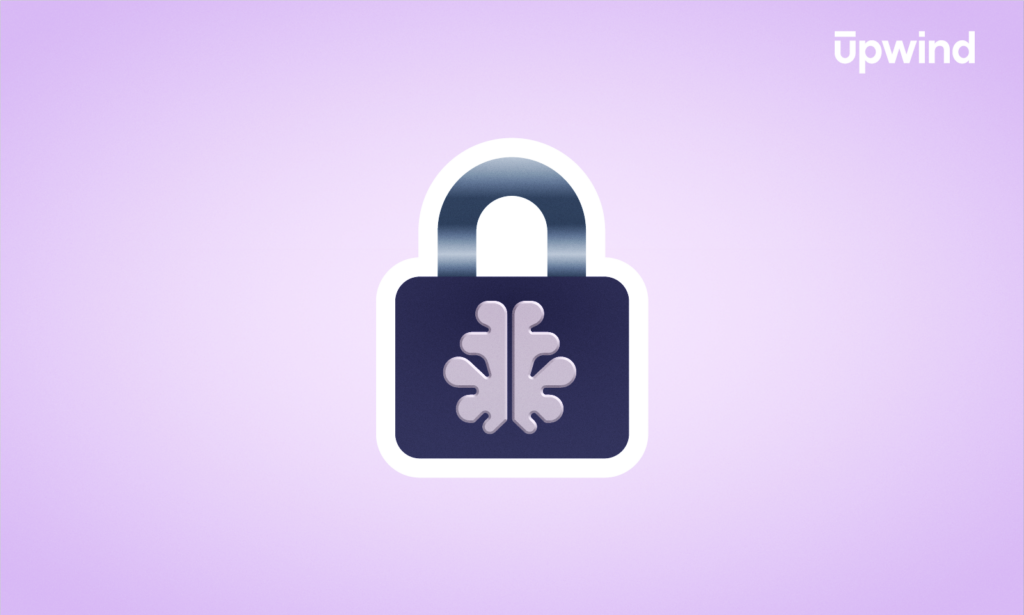
Cloud vulnerabilities are security weaknesses, such as misconfigurations or software bugs, that bad actors can exploit to breach or compromise cloud environments. While often viewed as less critical than a cloud security threat, vulnerabilities still require attention to proactively reduce the cloud attack surface and avoid potential breaches, such as unauthorized access.
For example, if organizations do not proactively patch software or ensure new updates are performed promptly, it can result in bugs or vulnerabilities that attackers can exploit. One such example was the CUPS RCE zero-day vulnerability, which allowed attackers to perform remote code execution leveraging a popular printing system with a bug.
In a world with both modern security needs and traditional protocols that are challenging to replace, the ability to prioritize cloud vulnerabilities is crucial. In this article, we will break down the most common cloud vulnerabilities and explore vulnerability management best practices in the current cloud landscape.
What is Cloud Vulnerability Management?
Cloud vulnerability management includes processes that operate at the network, posture, and workload layers. Common vulnerabilities and exposures (CVEs) are publicly available, known identifiers that provide a reference point for teams to understand specific vulnerabilities in their systems.
However, CVEs are growing. New vulnerabilities are set to swell their ranks by about 2,900 per month this year, a 25% increase over 2023.
Further, the cloud environment introduces unique vulnerabilities not fully captured by CVEs, making vulnerability management an expanding challenge, regardless of whether organizations engage in cloud computing using cloud platforms like AWS, Azure, Google Cloud, or a combination of cloud service providers.
A key point is that, while often used interchangeably, cloud vulnerabilities are distinct from threats, potential actions that exploit vulnerabilities, and risks, which represent the likelihood of exploitation and consider potential harm and exposure. Vulnerabilities aren’t always visible and urgent. However, managing them is both an expanding and ongoing task.
Vulnerability Management with Upwind
Upwind identifies known vulnerabilities, but more importantly, offers runtime-powered workload scanning features so you get real-time threat detection, contextualized analysis, remediation, and root cause analysis that’s 10X faster than traditional methods.
Benefits of Cloud Vulnerability Management
According to Gartner, vulnerability assessment solutions discover, identify, and report on vulnerabilities across on-premises, hybrid, or cloud environments. That’s part of the broader “vulnerability management,” a process with ongoing monitoring that adds prioritization and remediation to help organizations use the data they get from vulnerability assessments.
Let’s dive deeper into each step of the holistic vulnerability management process.
Asset Discovery and Inventory
In order to have a robust vulnerability management practice, organizations need to first take a comprehensive inventory of their cloud assets, which allows them to better understand their cloud risks and how to prioritize them. However, the speed of cloud innovation can make maintaining a comprehensive cloud inventory challenging for the following reasons:
- The dynamic cloud environment: Cloud and containerized assets can be short-lived, making them challenging to track continuously.
- Scale: Large, distributed networks take time to scan comprehensively.
- Diverse assets: Organizations include various asset types, each requiring different discovery methods.
- Shadow IT: Unauthorized assets and use poses risks but can be difficult to detect.
To solve these challenges, organizations should consider continuous scanning and automated tools for asset discovery built for the cloud ecosystem. Discovery processes must handle cloud and containerized assets effectively and provide clear visualizations of asset relationships and network architecture.
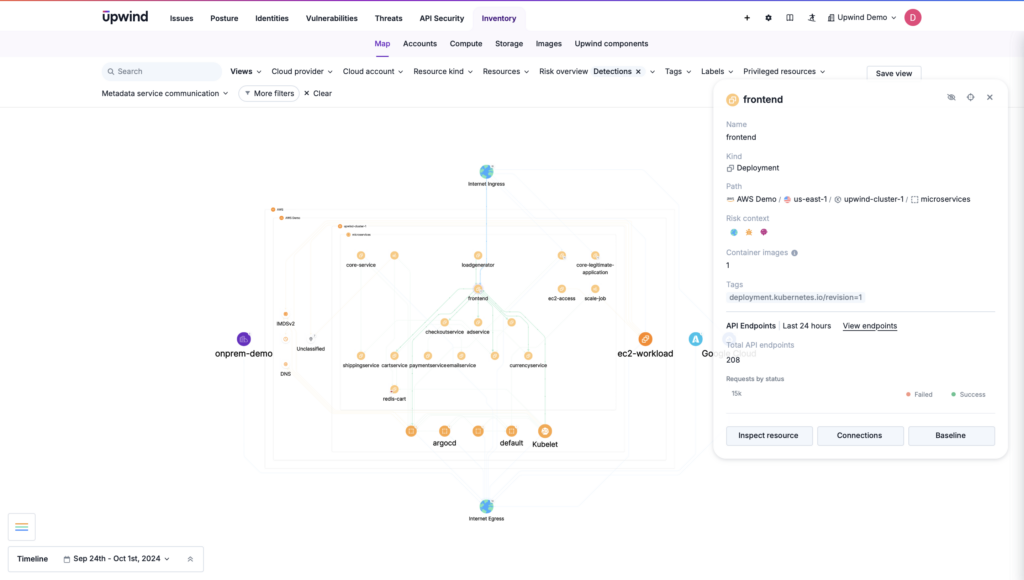
Vulnerability Assessments
Organizations should employ vulnerability management tools that constantly scan for vulnerabilities and leverage runtime data. Using these runtime insights, teams can prioritize vulnerability findings, proactively reduce their attack surface, and reduce time to remediation for critical risks.
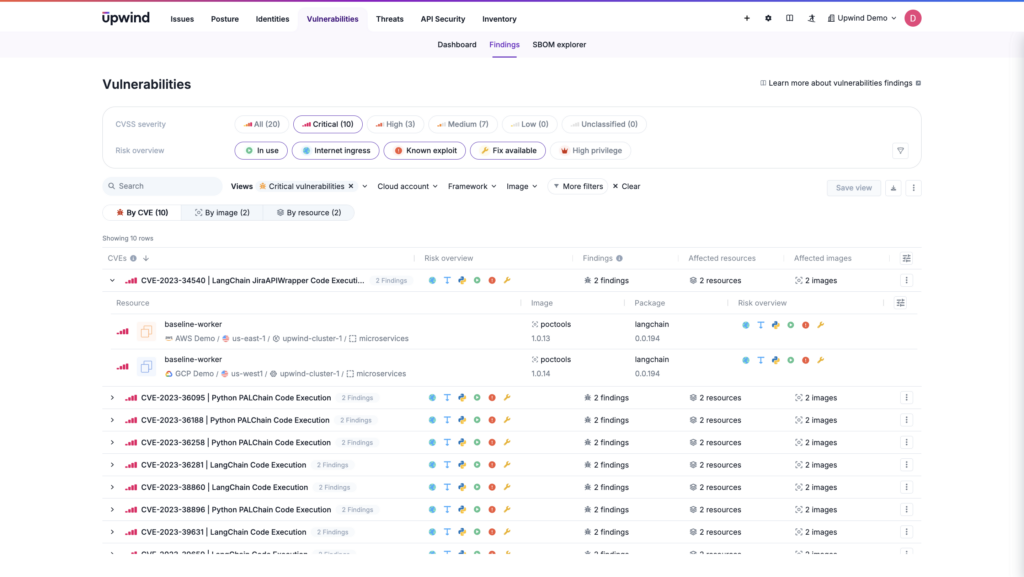
Prioritization
One of the biggest challenges that security teams face with vulnerability management is how to accurate prioritize risks based on their potential impact and likelihood of exploitation. While some tools provide standardized CVSS scores, cutting-edge tools offer prioritization based on contextualized risk, using machine learning to understand an organization’s specific environment and providing more accurate prioritization.
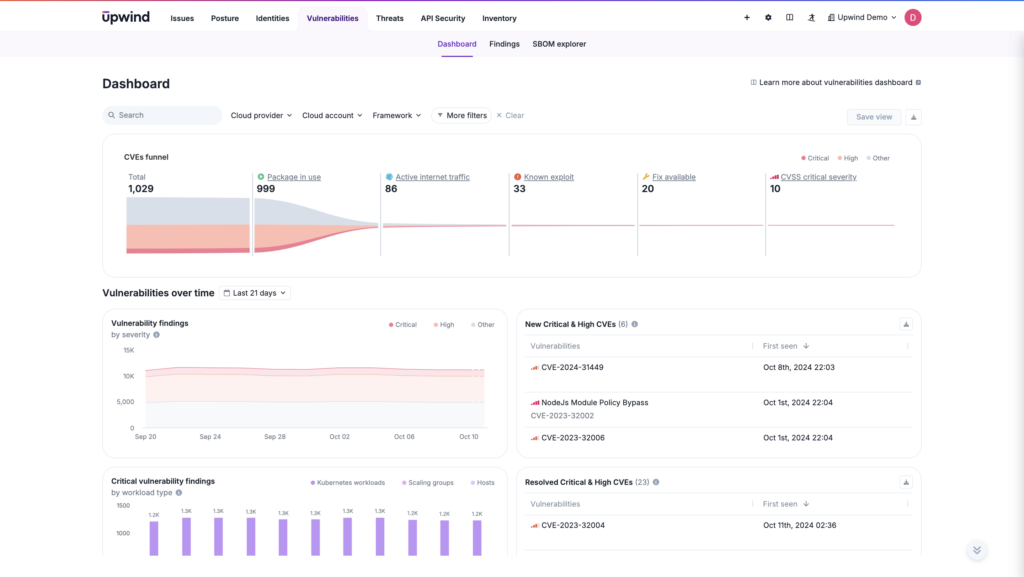
Remediation
Once vulnerabilities are identified and prioritized, the next step for teams is to rapidly remediate them to avoid potential exploitation. Remediation is the ultimate goal of vulnerability management, whether patching, configuration changes, or compensating controls. Advanced vulnerability tools will recommend steps for remediation, cutting down the amount of time that it takes teams to fix vulnerabilities.
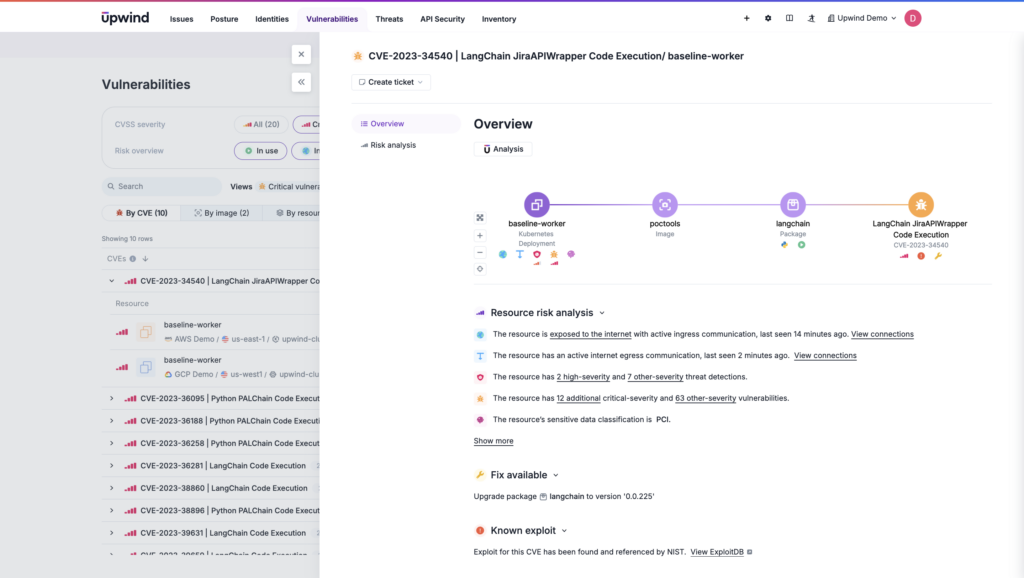
Reporting and Analytics
Another major challenge for security teams is accurately measuring vulnerability management progress in an era of growing vulnerabilities and continuous remediation. Ideally, security tools will include real-time dashboards that integrate with broader security solutions to ensure that risks, once identified, are eliminated from the CI/CD pipeline and aren’t repeated in future deployments.
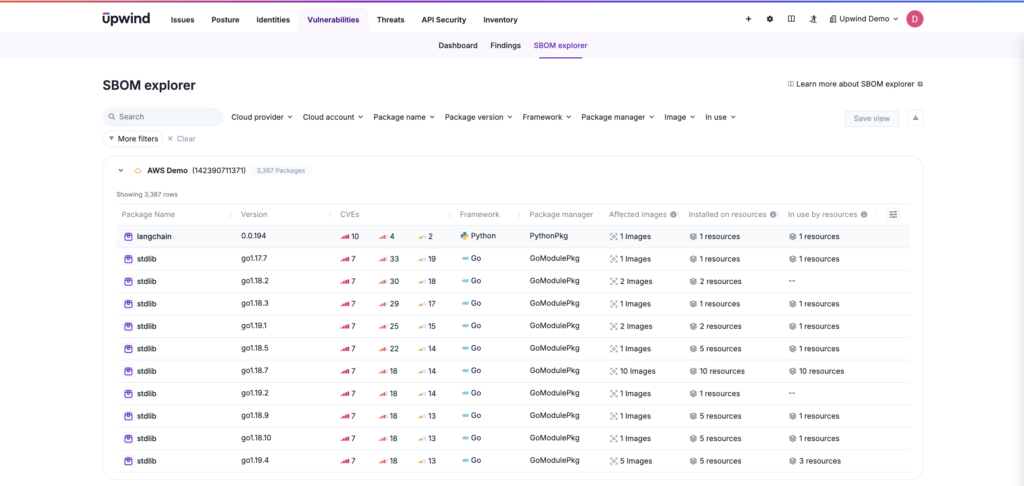
Common Cloud Vulnerabilities In Depth
Vulnerability management is a crucial part of cybersecurity as common vulnerabilities often consistently pose significant risks to organizations. These weaknesses serve as entry points for malicious actors, making identification and remediation critical components of a holistic security strategy. Here are some of the most common cloud vulnerabilities:
| Vulnerability | Common Examples | Impacts | Mitigation Strategies | Recent Incident |
| Cloud misconfigurations | Open ports, overprivileged identities, Open S3 buckets, third-party misconfigurations, poor password security | Data breaches, unauthorized access to sensitive data | Implement strong access controls and conduct regular audits | Capital One data breach (2019) |
| Weak Identity and Access Management (IAM) | Lack of multi-factor authentication (MFA), misconfigured policies, poor password security, expanding access privileges, lack of automated identity lifecycles | Unauthorized access to systems and data | Enforce MFA regularly and review access privileges | Uber breach (2016) |
| Insufficient Data Encryption | Insecure access methods, lack of encryption in storage, insecure protocols for data transfer | Data leaks and compliance violations | Use strong encryption tools for data at rest and in transit | Accellion breach (2021) |
| Unpatched Software | Open ports, default credentials, unpatched operating systems, outdated libraries and dependencies | Exploitation by hackers leading to data breaches | Update software and apply patches regularly. | Microsoft Exchange vulnerabilities (2021) |
| API Vulnerabilities | Poor access controls, insecure or no authentication, lack of rate limiting, insecure direct object references (IDOR) | Data breaches and unauthorized actions | Implement strong authentication and rate-limiting | Facebook API data exposure (2019) |
| Limited Visibility and Monitoring | Long-term data exposures, unidentified misconfigurations | Extended exposure to threats and compliance issues | Establish comprehensive monitoring and alerting systems, connect all layers of security across all environments | Twilio breach (2020) |
While cloud vulnerabilities are constantly evolving, advanced vulnerability management tooling will proactively identify risks in organizations’ cloud environments, prioritize vulnerabilities based on potential impact to the unique environment and enable teams to streamline the remediation process.
Upwind Fortifies your Cloud
Vulnerability management is a critical part of proactive cloud security, but the real value lies in integrating vulnerability management into a comprehensive security strategy that encompasses:
- Risk-based prioritization using runtime insights
- Streamlined DevSecOps collaboration to remediate vulnerabilities faster
- Correlated risk findings with broader cloud context to prioritize vulnerabilities that could impact resources with posture findings, sensitive data, internet communication and highly privileged identities.
- Additional capabilities like CSPM and CWPP to supplement to strong vulnerability management practices
A holistic CNAPP is one way to integrate cloud vulnerability management into your overall cloud security strategy, reduce your attack surface, and manage your most urgent vulnerabilities.
Schedule a demo to see how.

